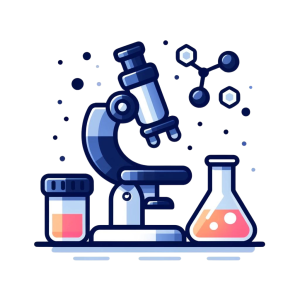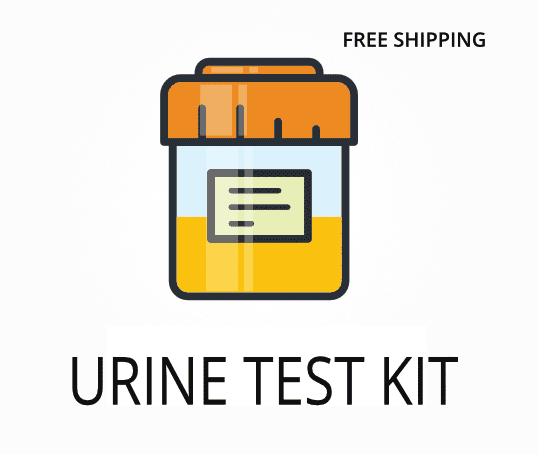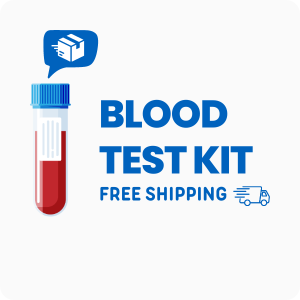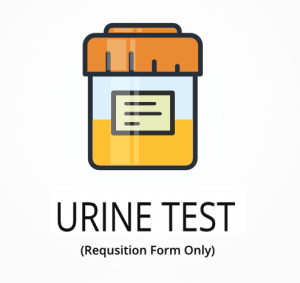 What is the TOXDetect Toxicity Profile (formerly GPL-TOX by Great Plains)?
What is the TOXDetect Toxicity Profile (formerly GPL-TOX by Great Plains)?
The TOXDetect Toxicity Profile is a detailed test that measures your exposure to various environmental toxicants. It now includes 27 test markers, with 8 new additions, including Glyphosate. This test analyzes the levels of multiple toxins commonly found in food, water, household products, personal care products, plastics, and air, helping you understand potential health risks. This profile measures 19 toxins using a single urine sample.
Why is the TOXDetect Profile Important?
Environmental toxicants may significantly impact health, contributing to chronic diseases and other health issues. The TOXDetect Profile is vital for identifying these toxicants early, allowing for timely interventions. By understanding your exposure, you can take proactive steps to reduce risk and improve overall health, making it an essential tool in both conventional and functional medicine.
Why Should You Consider Ordering the TOXDetect Profile?
Consider ordering the TOXDetect Toxicity Profile if you are concerned about environmental toxicant exposure, especially if you have unexplained health issues. Early detection through this profile may lead to effective treatments. If you are experiencing unexplained health issues, we strongly recommend seeing your primary healthcare provider as well.
Environmental toxic exposure has been associated with:
|
|
Symptoms that may be associated with environmental toxic exposure:
- Behavioral abnormalities
- Cognitive dysfunction (brain fog)
- Fatigue
- Headache
- Memory disturbance
- Mood changes
- Nausea
- Neurological symptoms
- Respiratory problems
Labs Included in Your Order
| Name | What They Are | Common Products | Negative Health Impacts |
|---|---|---|---|
| Phthalates | Chemicals used to make plastics flexible | Toys, food packaging, personal care products | Hormone disruption, developmental issues |
| Bisphenol S (BPS) | A chemical used in making plastics | Plastic bottles, food containers, thermal paper receipts | Hormone disruption, may affect brain and behavior |
| Glyphosate | A widely used herbicide | Weed killers, GMO crops | Hormone disruption, kidney and liver damage |
| Organophosphates | Chemicals used in insecticides | Bug sprays, agricultural pesticides | Nervous system damage, respiratory issues |
| 2,4-Dichlorophenoxyacetic Acid (2,4-D) | A herbicide used to kill weeds | Weed killers, lawn care products | Skin irritation, potential cancer risk |
| Pyrethroids | Synthetic insecticide chemicals | Flea treatments, bug sprays | Neurological issues, skin irritation |
| Acrylamide | Chemical formed in foods when cooked at high heat | Fried foods, baked goods, coffee | Increased cancer risk, nervous system damage |
| Perchlorate | Chemical used in rocket fuel and explosives | Drinking water, some foods | Thyroid disruption, hormone imbalance |
| Styrene/Ethylbenzene | Used in plastic and rubber products | Foam cups, insulation, plastics | Respiratory problems, possible cancer link |
| Xylene | A solvent used in many products | Paints, varnishes, adhesives | Headaches, dizziness, liver and kidney damage |
| Benzene | Petrochemical compound | Gasoline, smoke, industrial fumes | Blood disorders, increased leukemia risk |
| Acrylonitrile | Used to make plastics and synthetic rubber | Food containers, packaging | Respiratory issues, cancer risk |
| 1-Bromopropane | Solvent for cleaning and adhesives | Dry cleaning, spray adhesives | Nerve damage, reproductive toxicity |
| 1,3-Butadiene | Used in rubber production | Tires, rubber, plastic manufacturing | Cancer, cardiovascular issues |
| Ethylene Oxide / Vinyl Chloride | Gas used to sterilize and manufacture plastics | Medical equipment, plastic products | Respiratory issues, cancer risk |
| Triphenyl Phosphate | Flame retardant chemical | Electronics, furniture, plastics | Hormone disruption, reproductive toxicity |
| Naphthalene | Aromatic hydrocarbon | Mothballs, air fresheners | Respiratory issues, potential carcinogen |
| Toluene | Solvent in paints and cleaners | Nail polish, glue, thinners | Neurological damage, developmental risks |
| Acrolein | Byproduct of combustion | Smoke, industrial emissions | Respiratory irritation, cardiovascular effects |
| Propylene Oxide | Used in making plastics and foams | Polyurethane, fumigants | Cancer risk, respiratory irritation |
| 1,2-Dichloropropane | Industrial solvent | Paint strippers, degreasers | Liver/kidney damage, cancer potential |
| Carbon Tetrachloride | Former cleaning agent | Dry cleaning, refrigerants | Liver damage, CNS toxicity |
| Chlorobenzene | Solvent in pesticides | Pesticide products, solvents | Kidney/liver damage, cancer risk |
| Dibromochloropropane (DBCP) | Banned pesticide | Soil fumigants (historic use) | Male infertility, potential carcinogen |
| DEHP (Di(2-ethylhexyl)phthalate) | Plasticizer used in flexible plastics | IV bags, food wraps | Hormone disruption, reproductive toxicity |
| DEP (Diethylphthalate) | Plasticizer in personal care items | Perfumes, lotions, cosmetics | Hormone disruption, developmental toxicity |
| DMP (Dimethylphthalate) | Plasticizer in insect repellents | Repellents, plastics | Hormone disruption, reproductive risks |
| DBP (Di-n-butylphthalate) | Used in adhesives and nail polish | Cosmetics, adhesives | Hormone disruption, reproductive toxicity |
TOXDetect Profile FAQs
What is the TOXDetect Profile for?
The TOXDetect Toxicity Profile is designed to detect and measure various environmental toxicants in your body, including heavy metals, pesticides, and industrial chemicals. It may help identify your exposure to these harmful substances.
What do low and high levels mean?
High levels of toxicants indicate significant exposure to harmful substances, which may lead to various health problems. Low levels generally indicate minimal exposure and are usually considered safe but should be monitored for any potential risk.
What are the signs and symptoms of the issues the test is testing for?
Symptoms of toxicity exposure may vary but often include fatigue, headaches, digestive issues, neurological symptoms, and unexplained health problems. Long-term exposure can lead to chronic diseases and other serious health conditions. It is strongly advised to consult your primary healthcare provider if you are experiencing these signs and symptoms.
How often should I retest?
Retesting frequency depends on your initial results and exposure risk. If high levels of toxicants are found, follow-up testing is recommended every 6-12 months to monitor and manage exposure.
How accurate is the test?
The TOXDetect Profile is highly accurate and uses advanced analytical methods to detect and measure toxicants. It provides reliable results that can be used to guide health interventions.
Are test results private and confidential?
Receive test results securely on TrueHealthLabs.com under ‘My Account.’ It’s critical that you share them with your physician. Results may be disclosed to health authorities only if legally mandated, e.g., for STDs or COVID-19. Review our privacy policy for more details.
Medical Review Board
Reviewed by Jeff Donohue M.D. from Body Logic and Brady Hurst DC, CCCN. Written by True Health Lab’s team of editorial health contributors.
Disclaimer: This information is for educational purposes only and not intended as medical advice. Consult your healthcare provider for personalized guidance.
Why Customers Trust True Health Labs – What People are saying
Also rated 4.6 out of 5 based on 3452 ShopperApproved reviews- See all TrueHealthLabs.com reviews.








